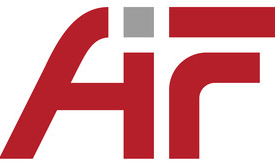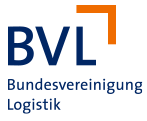Veröffentlichungen
| [1] | Klenk, F.; Häfner, B.; Lanza, G. & Wagner, M. (2019), „Kreislaufwirtschaft in globalen Wertschöpfungsnetzwerken“, Industrie 4.0-Management, S. 29-32. 10.30844/i40M_19-6_S25-28 Abstract Die Kreislaufwirtschaft zielt darauf ab, Produkte mehrfach wertschöpfend dem Produkt- und Produktionslebenszyklus zuzuführen, um den Ressourcenverbrauch zu reduzieren und die Wirtschaftlichkeit zu erhöhen. Der vorliegende Beitrag präsentiert, basierend auf einer Definition der Kreislaufwirtschaft und ihrer Konzepte, die aktuelle industrielle Praxis zur erfolgreichen Umsetzung und die damit einhergehenden Potenziale. Anschließend werden bestehende technische Herausforderungen der Kreislaufwirtschaft mit Fokus auf strategische Herausforderungen und "Closing-the-Loop"-Ansätze analysiert. Der Beitrag soll Entscheidungsträger dabei unterstützen, die Vorteile der Kreislaufwirtschaft zu erkennen und Herausforderungen für eine erfolgreiche Einführung bereits früh anzugehen. |
|
| [2] | Klenk, F.; Gleich, K.; Meister, F.; Haefner, B.; Lanza, G. & , . (2020), „Approach for developing implementation strategies for circular economy in global production networks“. Advancing Life Cycle Engineering: from technological eco-efficiency to technology that supports a world that meets the development goals and the absolute sustainability, Hrsg. Brissaud, D.; Zwolinski, P.; Paris, H. & Riel, A., S. 127-132. 10.1016/j.procir.2020.01.052 Abstract Due to excess of resource consumption, circular economy (CE) aims to return products to the production life cycle in an economically and ecologically reasonable way. Yet, few approaches focus on the strategic and network level of CE. First, existing approaches regarding the configuration of CE networks and the development of appropriate business models are reviewed. Sec- ond, an approach on how to integrate both aspects is presented. By integrating these aspects, implemen- tation strategies for CE in global production networks shall be developed facilitating strategic decisions. The approach is planned to be demonstrated in a German company supplying the automotive sector. |
|
| [3] | Klenk, F.; Potarca, M.; Häfner, B. & Lanza, G. (2020), „Kreislaufwirtschaft in Produktionsnetzwerken“, ZWF Zeitschrift für wirtschaftlichen Fabrikbetrieb, Nr. 10, S. 668-672. 10.3139/104.112384 Abstract Die Kreislaufwirtschaft als Konzept zur nachhaltigen Produktion weist eine stetig steigende Relevanz auf. Gleichzeitig stellt deren Umsetzung für Unternehmen häufig eine große Herausforderung dar und erfordert branchen- und produktspezifische Lösungen. Ziel dieses Beitrags ist die Schaffung eines Rahmenmodells für Anforderungen und Charakteristika einer kreislauffähigen Produktion, sowie die Analyse von Konzepten, welche einen Wandel zu zirkulären Geschäftsprozessen ermöglichen. |
|
| [4] | Klenk, F.; Kerndl, F.; Heidinger, F.; Benfer, M.; Peukert, S. & Lanza, G. (2022), „Product networks and network configuration in global production networks“, Production Engineering, 10.1007/s11740-022-01149-4 Abstract Driven by an increasing demand for individualized products and shorter product life-cycles, companies continuously extend
their product portfolio. Simultaneously, companies expand into new markets to reach customers and to exploit varying location
factors to reduce costs. Global production networks (GPNs) have to be adapted constantly to react to new circumstances
and changes in the demand of products. To remain competitive, product allocation and production network configuration
are essential. At the same time, companies face an increasing complexity while handling these tasks. This poses a challenge
particularly for small and medium sized companies, which have limited planning capacities and management resources.
Current literature describes optimization-based approaches for the integrated product allocation and network configuration
of production networks. Yet, multi-objective models lack transparency of results and user friendliness. Therefore, this paper
presents a multi-objective optimization model that incorporates flexibility and reconfiguration aspects to determine an optimal
product allocation and network configuration of a GPN over a given planning horizon. The preemptive goal programming
approach is used to identify Pareto-optimal solutions and to increase user friendliness. The subsequent verification, validation
and post-optimality analysis combined in a structured process enables a wide range of companies to apply the approach.
The model is successfully applied in the GPN of a special machine manufacturer, which produces high precision metrology
machines. Due to its transparent approach for complex planning problems, the developed method provides a solid base for
well-founded, objective decisions. Hence, the risk of costly errors in the planning phase is reduced. |


